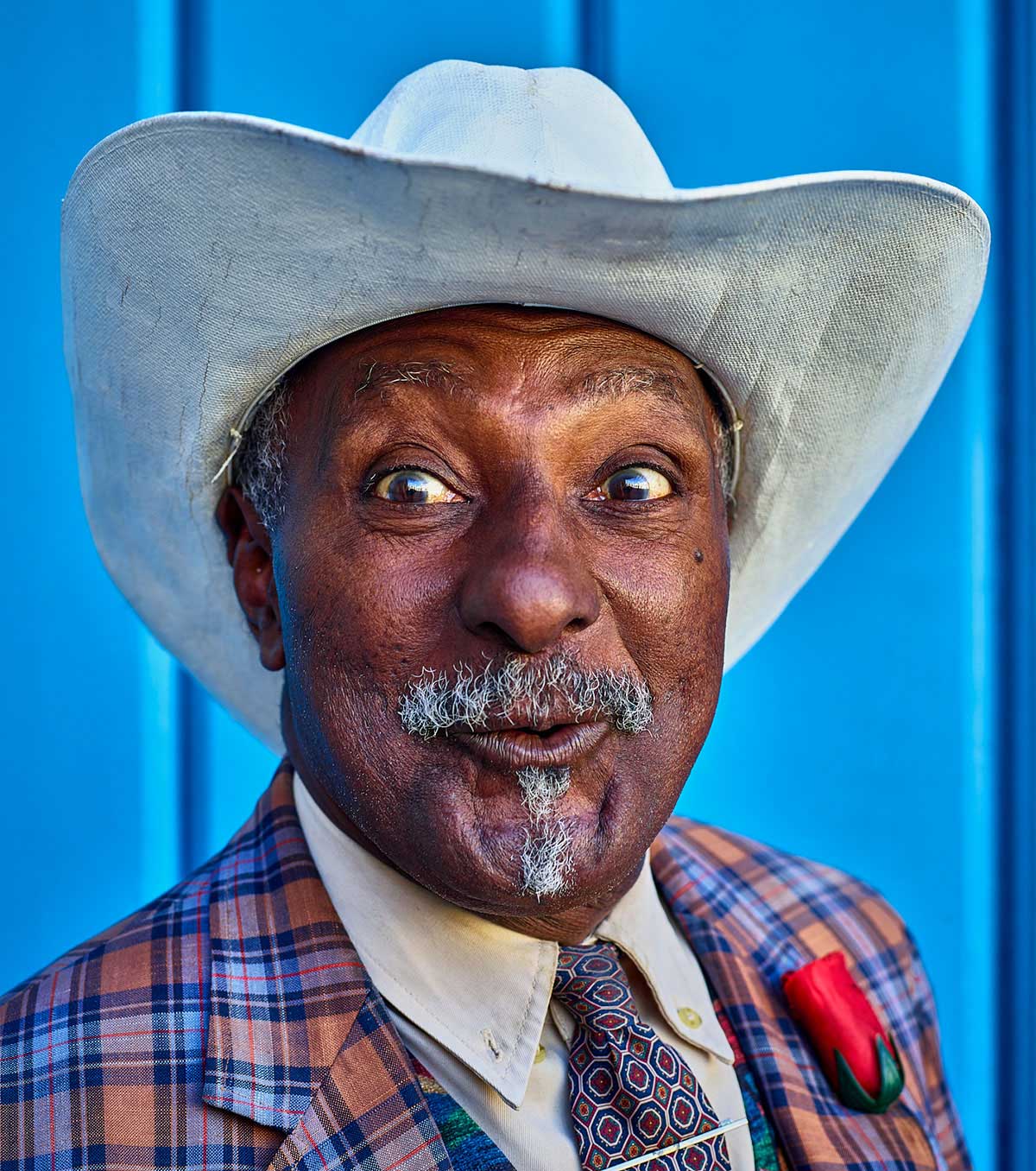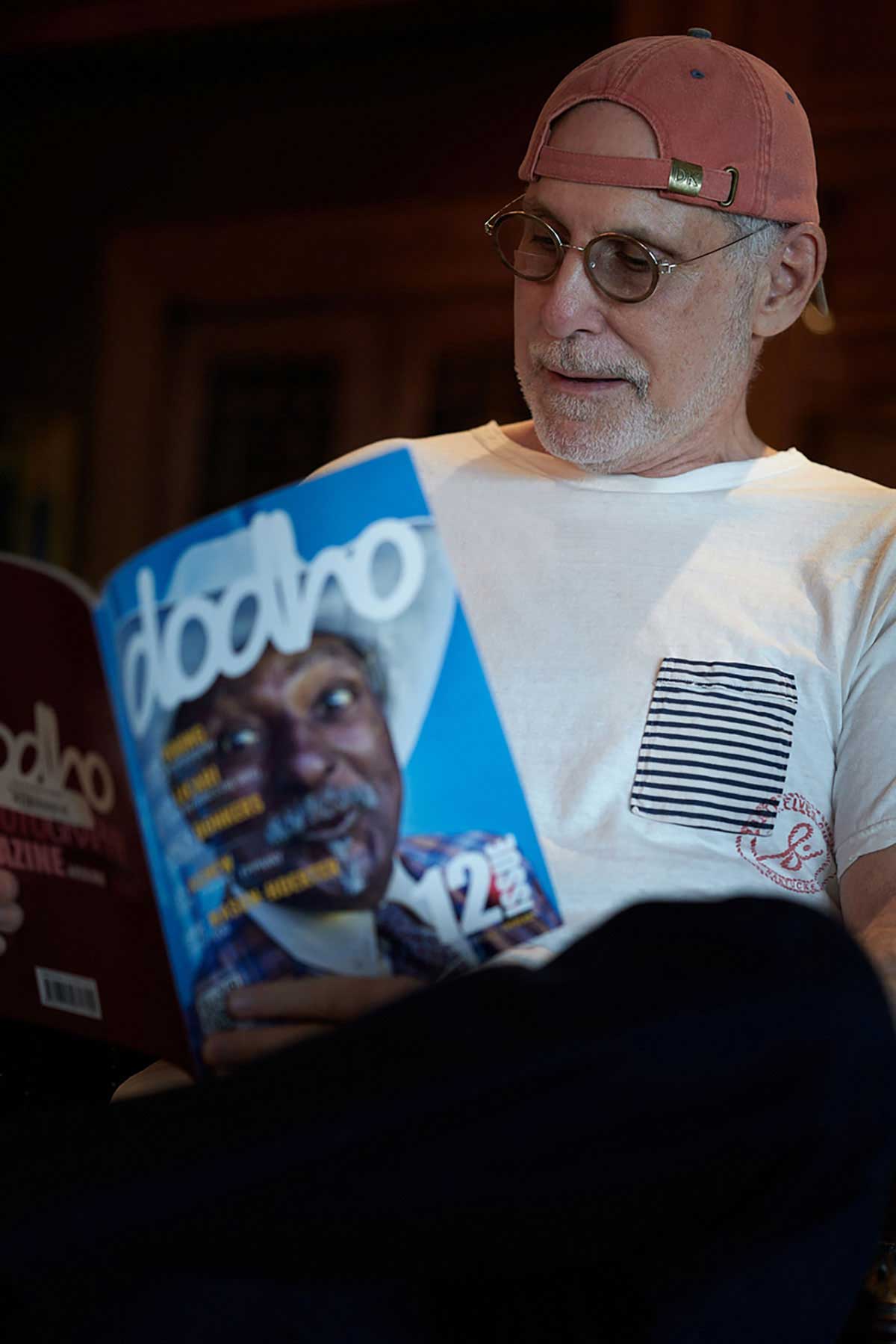Having had a proclivity for art at an early age, I pursued a dual major in college, Fine Arts and Economics. My first passion was painting but my path took me to a long corporate career. I put down my brush and picked up a camera.
I’m a mathematician by nature and find the underpinnings of the medium format and technical cameras challenging. My interests span street portraiture, nightscapes and landscapes. In the last five years, I have dedicated myself to the pursuit of a professional career in photography. Born in the Bronx, NY, I feel at home in the heart of a busy city. The constant motion of the streets and all of its inhabitants inspires me. I aspire to capture enduring portraiture of real people in their environments going about the tasks of everyday life. I tend to seek out places around the world that have yet to succumb to modernization, urbanization and gentrification. Preserving Cultural Heritage through a shared moment.
Shooting hand- held street portraits with the medium format Phase One camera system is far from inconspicuous. It forces me to slow down and make direct contact with people. Capturing intimate, candid portraits that reveal an inner characteristic or tell a story with an individual often gazing directly into the camera. I consider myself to be intellectually honest and seek to present things as they are. Authentic street portraiture of genuine people captured in a split second. A connection that I enjoy sharing by turning the camera around. My reward is that glow of recognition and appreciation sometimes accompanied by a thumbs up, a smile or a nod. I am currently working on a black and white project entitled “Through the Eyes of the Street in South, Southeast Asia” which encompasses the slice of time before the global pandemic and the era of face masks. Devoid of the distractions of color, these images become all about the essence of the people. These timeless portraits lend themselves perfectly to the old platinum palladium printing technique, emphasizing what could soon be just history of these wonderful locations and people at their long-established trades.
My landscape work was recently exhibited at YJ Contemporary Fine Art. “Winter in New Zealand-A Study in Tranquility” features introspective works from New Zealand’s South Island. I decided to pursue this project in Winter because it was the “off” season, devoid of the large crowds that convene during the summer months. The Island is extraordinary in the sheer expanse and diversity of the landscape, changing from green rolling hills to snow-capped mountains within a day’s drive. It was difficult for me to slow down and wait for the light. Showcasing both the dramatic grand landscapes as well as its intimate details using long exposures to capture the mood, these images are as much a product of my own introspection. We are living in historic and challenging times on so many fronts. Bringing the world a little closer together through art and nature could not be more important in this environment. [Official Website] [Digital Edition] [Print Edition]
First of all, I would like to congratulate you on making the cover of Dodho’s latest Issue. It is very refreshing to me when I see portraits like this that show a lighter side to photography. The abundance of blue is also great, I loved the fact that there are so many details to be explored when I look at this character. From his cowboy style hat to the tie-clip, it’s truly an awesome shot! Could you tell us a little bit about how you came about capturing this image, who the gentleman possibly is or why he was dressed fancy?
We were on an early morning shoot to capture flamenco dancers in an empty Cathedral Square. As the square started filling up with people, this dapper gentleman was posing with a huge Cuban cigar. For donations, he was allowing people to photograph him. He was essentially a street performer. I took my turn, moved him against the blue backdrop and had him ditch the cigar. I asked him to take a pose he felt comfortable with rather than the canned pose he normally exhibited on the street. To my surprise, he chose to make this very animated face. Although it wasn’t necessarily “unscripted”, I worked to get an authentic expression. His smile is infectious and the details evident in this street portrait tell a story.
‘Blue man’ is obviously part of a bigger series where you investigate Cuba’s unscripted street life. This is a particularly interesting collection of images to me because of how different it is to other portrait work. In many cases the photographer’s intention is to capture an image that highlights the struggles of individuals, (specifically in street photography and when photographing subjects that live on the streets). Street photography is not always about presenting feelings of joy or happiness. More often than not it’s about photographing a reaction. However, this collection showcases the former and brings about a sense of belonging and culture. Could you tell us about how to came to photograph in Cuba and take these shots?
In early 2017, the diplomatic relationship between the US and Cuba was somewhat restored. This offered opportunities for “Cultural Exchange” between the two countries. I had recently acquired a Phase One Medium Format Camera System and was able to join a Phase One sponsored workshop to Cuba. It encompassed one week to explore different settings throughout Havana and Trinidad.

Some of these images have a lovely amount of bokeh around them, photographs like ‘Cuban Farmer’ and ‘Spiderman’, really center around the face and the expressions of the individual. Could you tell us what kind of gear you used when travelling to Cuba? Particularly in street photography, when big cameras are used, they can be imposing. how did you manage to get around this and photograph your subjects at such a close distance?
The gear used on this trip was the Phase One XF Camera, IQ3 Digital Back, and several Schneider-Kreuznach lenses including the 28mm which I used to capture unique portraiture including the boxer and the farmers. Part of the itinerary was a bus trip from Havana to Trinidad. Arrangements were made to stop at a working farm midway. I shot with the S-K 110mm f/2.8 and the 28mm f/4.5 lenses (working with a shallow depth of field for these portraits). Shooting a close-up portrait with a 28mm lens on a medium format camera is challenging and usually leads to an unwanted distortion of the subject. So, in many respects, this was an experiment to see if I could get the desired effect without all the undesirable consequences. In most instances, it worked. Allowing for a unique rendering of very interesting subjects. As a note, Blue Man was captured handheld with an 80mm f/2.8 lens at ISO 400, 1/80s, at f/7.1. Pushing the boundaries and experimenting with different lenses really made the captures unique. All of these subjects had great texture, detail and character in their faces.
When I envision Cuba as a country the image ‘Malecon in Motion’ is exactly this. A perfect representation of the soulfulness and culture that I would expect to experience if I ever went to Cuba. I’d like to ask you about the city of Havana itself and what your experience was like when walking around the city? It’s colours, the vibrancy of life and street culture, food and more? And did this city inspire you to continue taking more portrait images?
As an early visitor to the Country, I was privy to explore this beautiful place before any major commercialization had taken place. The people of Havana were at once welcoming and also leery of seeing foreign tourists. Havana is a gorgeous art deco city that has seen tough times. Walking the Malecon and the Grand Concourse surrounded by intricate architecture, watching vintage cars pass by, felt like a trip back in time. The vibrant city is a cultural feast ranging from open air music on the promenade to the quiet backstreets brimming with children playing on the rooftops. This was my first experience of street photography with the medium format system. I was immediately hooked. Capturing the soul of a country by engaging its people has become an ongoing pursuit.
In your statement for Dodho magazine you mentioned that you are a ‘mathematician by nature’ and that one of your degrees is ‘Economics’. I find it really interesting when individuals have a background completely unrelated to photography. It makes me want to investigate a style and understand the connection between a creative subject and a non-creative subject. When I view your work however, I am confronted with this array of creative interpretations and not at all what I expected. Would you say that photography provides you this new platform for solving a technical challenge, the result being an image that you are happy with?
The real challenge is capturing that genuine moment in a sympathetic and accurate fashion. In that regard, composition and light are the critical factors. The technical challenge is in getting very sophisticated and demanding equipment to cooperate in that endeavor. In addition, as a street portrait photographer, I’ve learned to focus on the details. Choosing to use a medium format camera for street photography forced me to change my personal approach. The camera itself is large, obvious and heavy. Shooting hand-held in busy urban environments required some practice and slowing down. For me, capturing authenticity is the primary goal. Getting past the posing phase and into the genuine takes time but it’s worth the effort.
You also mentioned in your statement that you ‘find the underpinnings of the medium format and technical cameras challenging’. As a landscape photographer myself, one collection which I find very interesting and, in my opinion, very well and technically executed is your ‘Boulder series’. I find these images to be a very subtle investigation of log exposure photography as well as focusing a great deal on subject composure. I’d like to know what particularly interests you about landscape photography and what you might achieve from this genre of photography that others do not offer?
Interestingly enough, even with my landscape work, I am seeking to make a personal connection. First, I have to establish an emotional connection to the scene. It is only then that I might conjure up an emotional reaction by the viewer. Long exposures tend to be moody, and when paired with a universal theme, like a jetty, a lighthouse, or a reflection, can truly speak to the heart. Individuals come to view art from a personal perspective. A landscape image that turns the attention to inner reflection is successful. My New Zealand work was photographed with that goal in mind.
I’d like to conclude this interview by asking you about any future travels, what body of work we can expect to see from you in the following year, or if you are planning on continuing a particular project in the future?
A landscape trip to New Zealand has been pushed back and a trip through the American West is tentative for the Fall. There is an old Yiddish proverb that states “We plan, God Laughs”. We will see what the future holds. I guess I can only hope for having future opportunities to pursue my photography, hone my skills and impact the world in my own way.
Francesco Scalici
A recent MA graduate from the University of Lincoln, Francesco has now focused on landscape photography as the basis of his photographic platform. An author for DODHO magazine, Francesco’s interest in documentary photography has turned to writing and has had various articles, interviews and book reviews published on platforms such as: ‘All About Photo.com’, ‘Float Magazine’ and ‘Life Framer Magazine’. Currently on a photographic internship, Francesco has most recently been involved in the making of a short film titled: ‘No One Else’, directed by Pedro Sanchez Román and produced my Martin Nuza.







